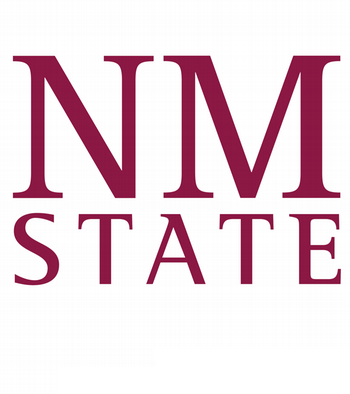Purpose and Authority
The University Archives was established in 1967 by the New Mexico State University Board of Regents to preserve university records of long-term or permanent value. Such records have continuing administrative, legal, fiscal, or historical significance. By maintaining these documentary materials we can insure that the important work done by your unit and the University is documented for future use.
The records of the official activities of the units and staff of New Mexico State University are the property of the institution. Their disposition or destruction is controlled by the Board of Regents. Proposals to dispose of records should be reviewed by and receive the concurrence of the University Archivist.
Email us your questions or comments at https://lib.nmsu.edu/forms/contact-archives.html.
Permanent Records to be Transferred
Transfer only inactive records which have little or no current administrative value. (Frequently used records should be retained by the office that uses them.)
Transfer records that document the organization, function, policies, procedures, operations, and essential transactions and outcomes of the unit, (see examples below):
The following descriptions are intended to serve as examples only of the types of records which may be transferred to the University Archives. Please do not regard this list as a disposition schedule; it is intended to serve only as a guide. There certainly may be records in your unit which are worthy of preservation, but which may not be described below. Please call the Archives with any questions you have regarding the disposition of your records.
- Correspondence — pertaining to policy, major events, gifts, etc., that records the history of the organization.
- Annual and other regular reports — provide a summary of activities for a given period of time, making them among the most valuable historical records.
- Financial records — summary reports such as audits, departmental budgets, and budget narratives. Please do not send vouchers, invoices, and receipts.
- Final research reports — provide summaries of the university's major research activities.
- Special reports — include reports and studies received from consultants or committees, and other reports having continuing administrative or research value.
- Personnel records — include applications, resumes, letters of reference, promotion and tenure information, contracts, etc.
- Official publications — include departmental brochures, bulletins, newsletters, directories, handbooks, etc.
- Photographs, films, videos, and audiotapes — provide important documentation of NMSU activities, students, personnel, and the campus.
- Policy statements — include policies governing recruiting, interdepartmental relations, and administration of departments, colleges, committees, etc.
- Meeting minutes (record copy) — of any boards, councils, committees, or similar groups. In many cases, meeting minutes are an organization's only record of activity.
- Procedure manuals and other guidelines issued — have an established influence on the method or manner of doing affected tasks.
- Architectural drawings — provide evidence of the physical development of the campus.
- Celebration and special event records — include programs, substantive promotional and informational material, and final reports resulting from university- or department-sponsored celebrations and special events.
Procedure Steps:
- Obtain standard records storage boxes (10x12x15 inches). They may be obtained from the NMSU Bookstore or an office supply store.
Non-standard containers are unacceptable. - If you have time, screen records and pull obvious duplicates.
- Without disturbing the existing file arrangement, pack records firmly in the containers in their original file folders as though they were file drawers. Do not force or stack records. Make sure that file folders can be removed or replaced without undue effort.
- Number the boxes in their file order and write the office name on the box label.
- Make a list of the file folder headings. Keep a reference copy for the office files. Send the Archives both a hard copy and a digital copy (electronic file), Microsoft Word is preferred.
Contact Archives with any questions regarding records disposition:
- Hobson-Huntsinger University Archives
- New Mexico State University Library
- MSC 3475; Branson Library
- Telephone: (575)646-3839
- Email: archives@lib.nmsu.edu
Prepare materials for shipment to the University Archives:
- Ensure that records are in file folders with labels describing contents.
- Replace hanging file folders with regular file folders.
- Identify each box with your office name and the box sequence (1 of 3, 2 of 3, etc.) Please use labels; do not write on the boxes.
- Pack records in the order in which they were kept by your office.
- Prepare a list of the folder titles for each box (container list).
- Place the complete list for all boxes in the front of box 1 or mail it to the Archives.
Prior to Shipping:
- Fill out a Records Transfer Form . Make a copy for your records. Send a digital copy to the University Archives with your shipment, in the front of the box, or as an attachment in an email.
- Call the University Archives at (575)646-3839 so that we may expect your records.
- Call the Physical Plant Department Work Order Desk (575) 646-7114, to arrange to have your records transported to the Archives. (PPD does not charge your account for transporting materials to the Archives.)
Completion Process:
You will receive confirmation from the University Archives that your records have been received. At that time you will be given the Accession Number assigned to your records. This number is used to identify the records should you need to access them.
Thank you and your cooperation is very appreciated!

